Abstract
The distribution, excretion, and possible metabolism of 14C- and/or 74As-cacodylic acid, an organoarsenical herbicide, was studied in rats following a single intravenous injection, intratracheal instillation or oral gavage. Male Sherman rats were dosed at levels ranging from 200 mg/kg to 120 μg/kg. The extent and rate of lung absorption was greater than gastrointestinal absorption. Concentrations in the liver and whole blood were higher after peroral dosing than intravenous administration. Levels observed in plasma and other tissues were similar after all three routes following the absorptive phase. The percent dose found in the whole blood, red blood cells, and plasma was similar for all doses given by these routes. Less than 0.1½ of the administered dose was recovered as 14CO2 by any route at 24 hr after administration. Twenty-four hours after intravenous, intratracheal, and peroral administration, 71, 60, and 25%, respectively, was excreted in the urine. After intravenous administration of 200 mg/kg, sufficient 14C-cacodylic acid was recovered in bile to account for the small amount excreted in the feces. Cacodylic acid is probably not metabolized to inorganic arsenic since the disposition of 14C and 74As-cacodylic acid were identical.
Kinetic analyses of the plasma curve for 14C-cacodylic acid (high dose) yielded three half-times; 0.014, 0.214 and 3.42 hr with an apparent volume of distribution of 15.3 ml. Highest initial concentrations were found in the whole blood, muscle, kidney, liver and lung.
Levels in all tissues decreased rapidly, but remained high in whole blood. The red blood cells were found to be the major site of body burden of cacodylic acid.
Full text
PDF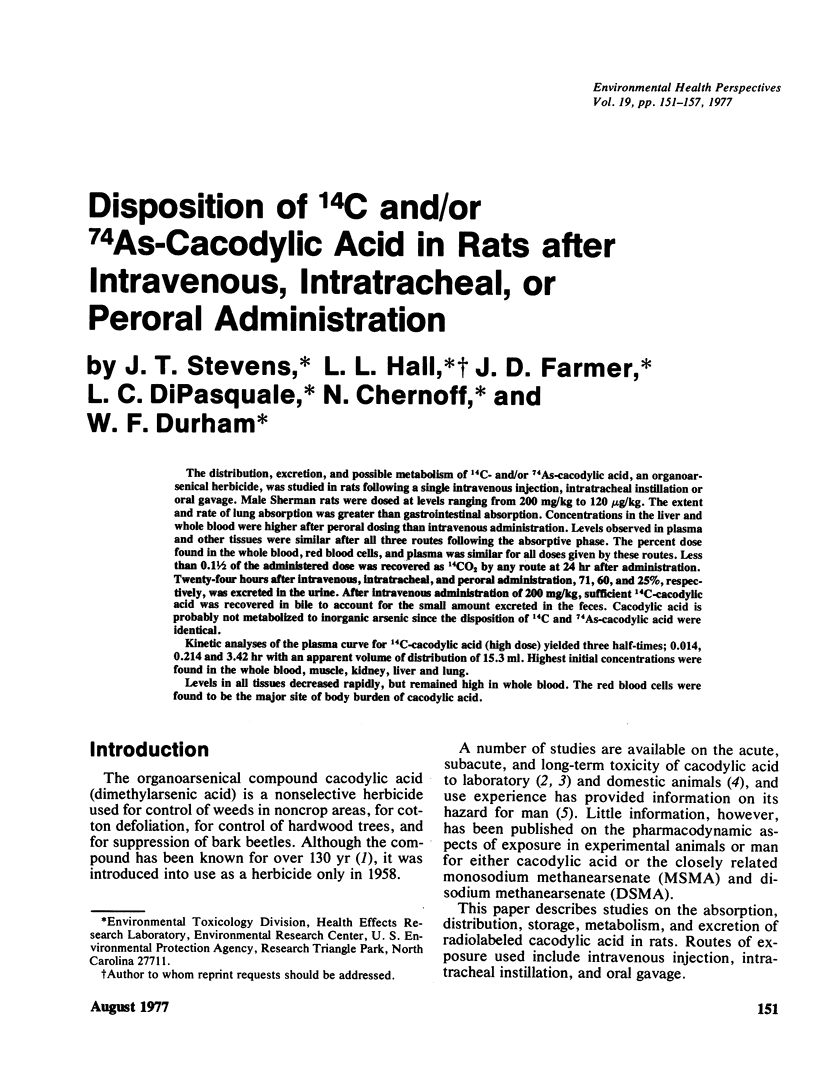
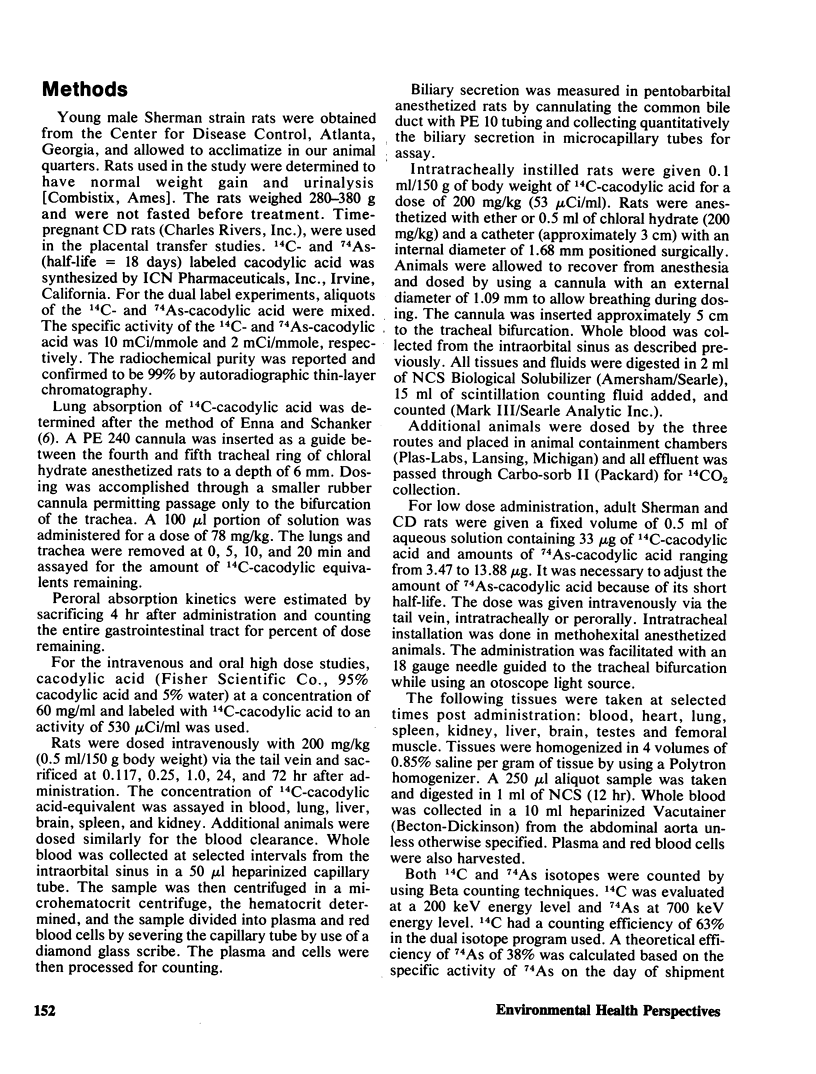
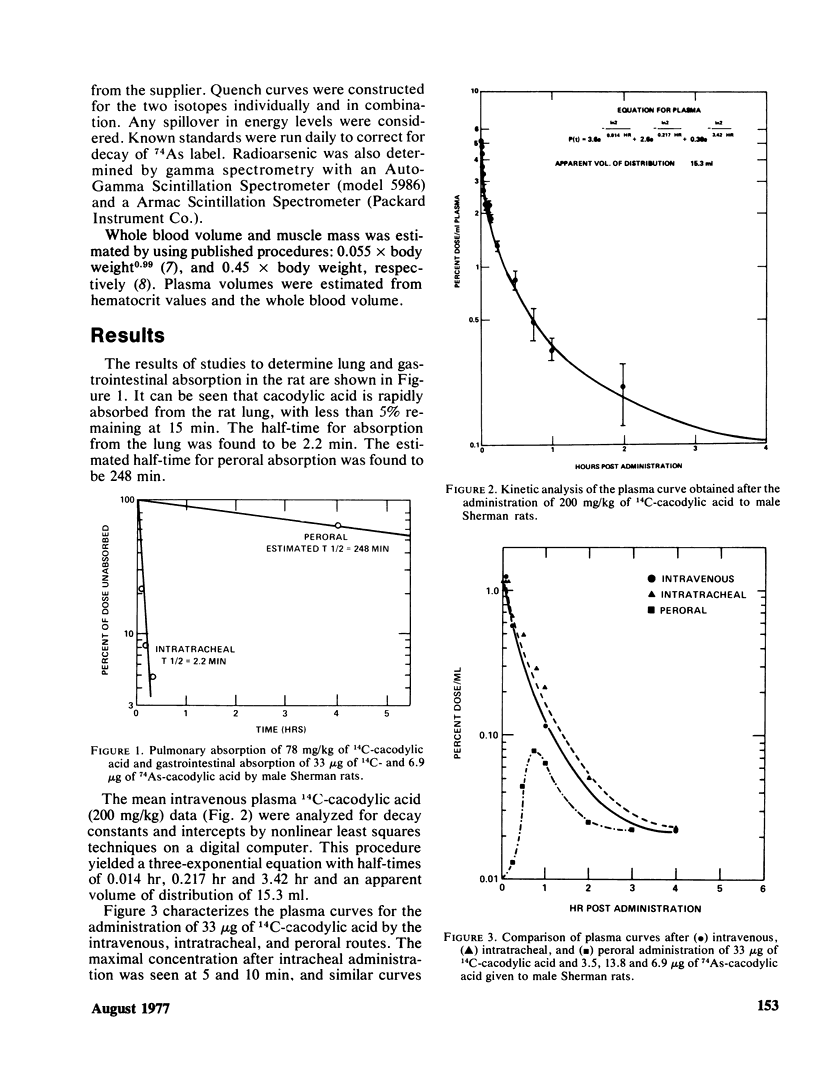

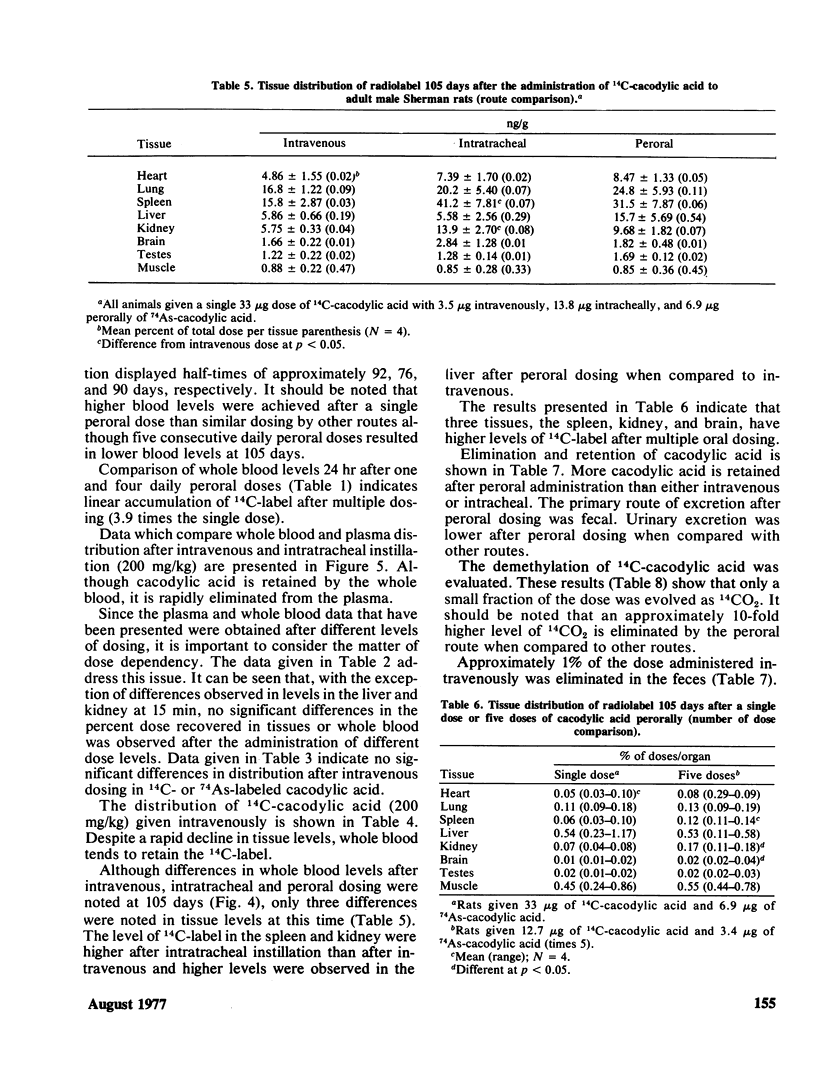
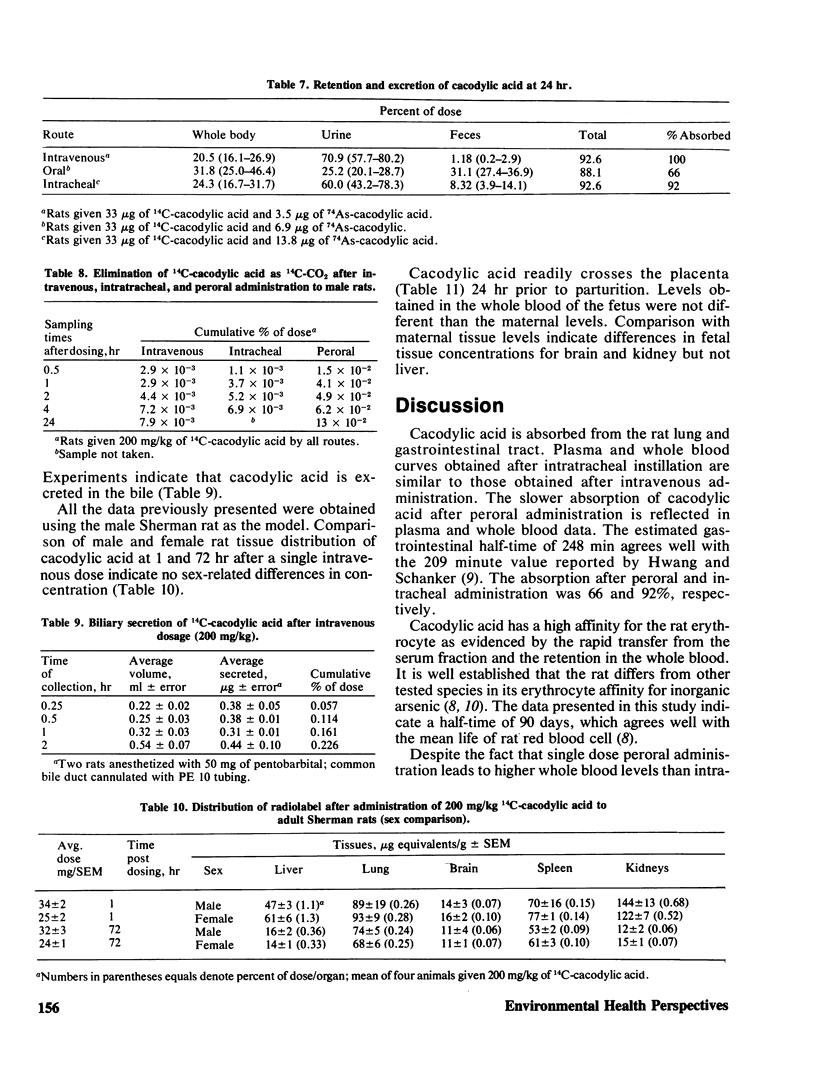
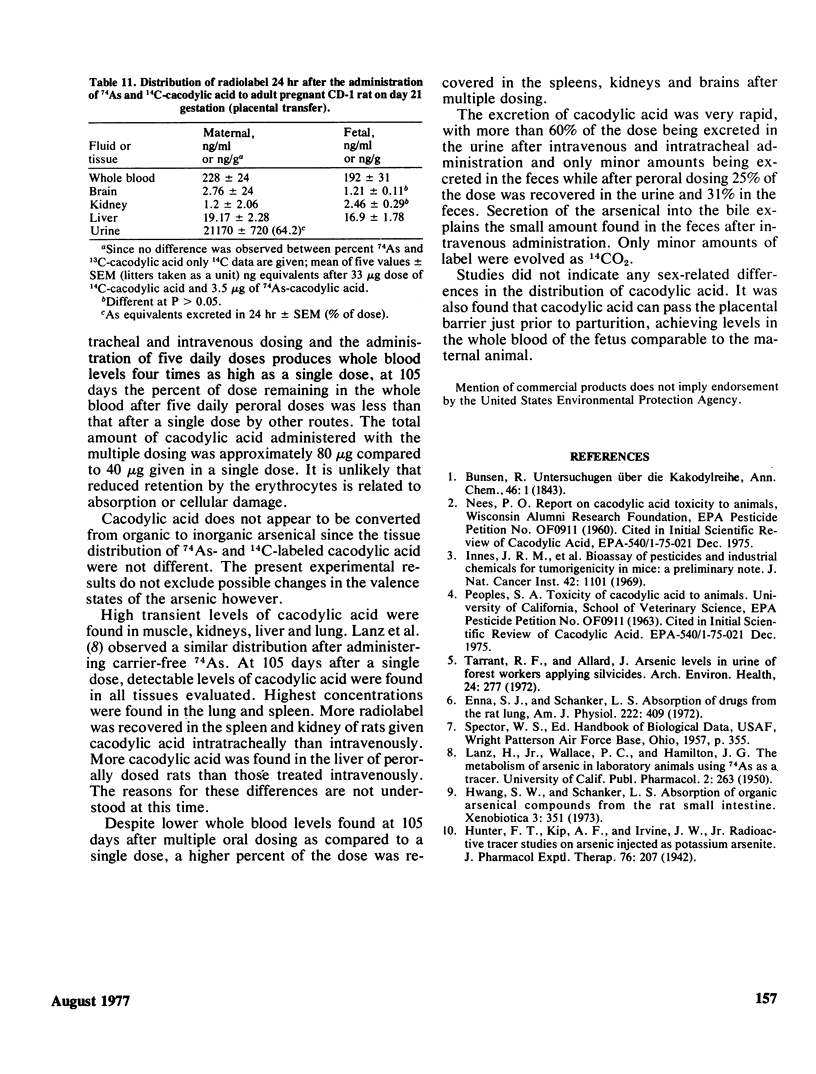
Selected References
These references are in PubMed. This may not be the complete list of references from this article.
- Enna S. J., Schanker L. S. Absorption of saccharides and urea from the rat lung. Am J Physiol. 1972 Feb;222(2):409–414. doi: 10.1152/ajplegacy.1972.222.2.409. [DOI] [PubMed] [Google Scholar]
- Hwang S. W., Schanker L. S. Absorption of organic arsenical compounds from the rat small intestine. Xenobiotica. 1973 Jun;3(6):351–355. doi: 10.3109/00498257309151527. [DOI] [PubMed] [Google Scholar]
- Innes J. R., Ulland B. M., Valerio M. G., Petrucelli L., Fishbein L., Hart E. R., Pallotta A. J., Bates R. R., Falk H. L., Gart J. J. Bioassay of pesticides and industrial chemicals for tumorigenicity in mice: a preliminary note. J Natl Cancer Inst. 1969 Jun;42(6):1101–1114. [PubMed] [Google Scholar]
- Tarrant R. F., Ore C., Allard J. Arsenic levels in urine of forest workers applying silvicides. Arch Environ Health. 1972 Apr;24(4):277–280. doi: 10.1080/00039896.1972.10666083. [DOI] [PubMed] [Google Scholar]


